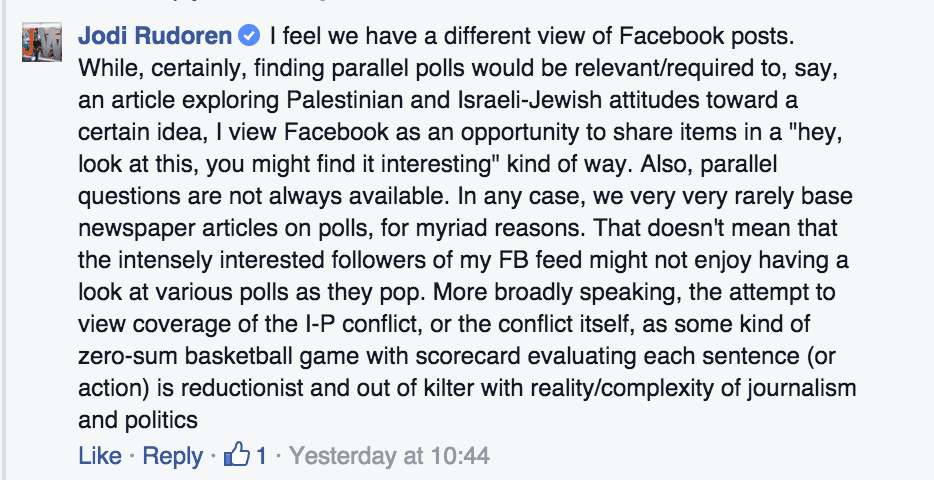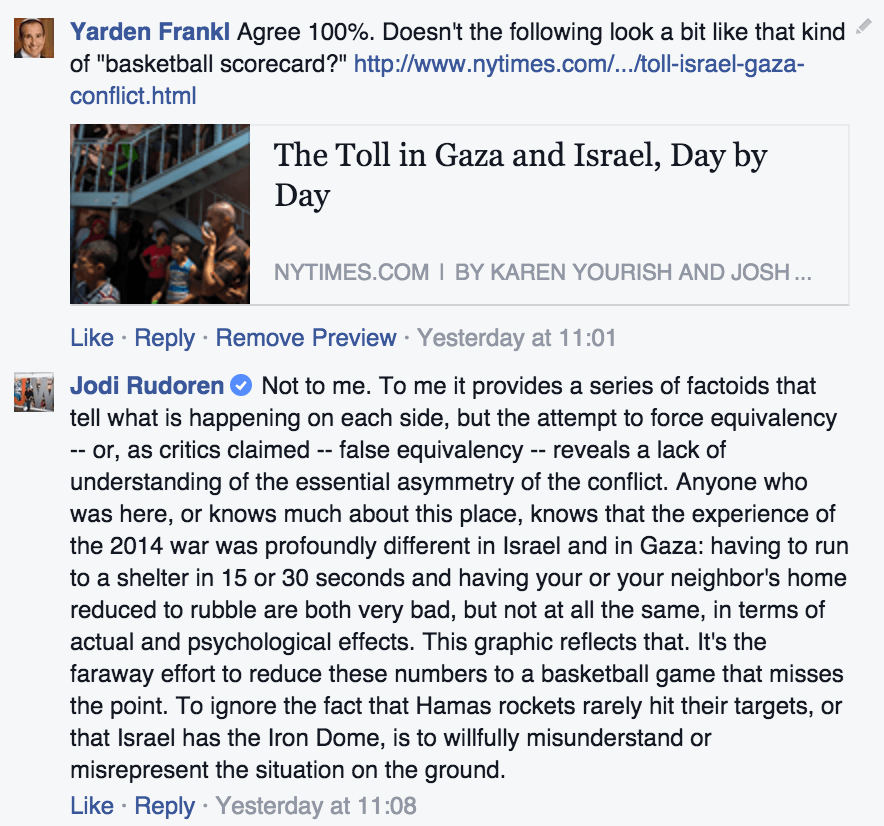We have often criticized the media for tallying up the casualties on both sides of the Israel-Palestinian conflict while leaving out important context without which the statistics are meaningless. Just by seeing the numbers of dead on both sides, one could easily conclude that the side with the most casualties must be in the stronger moral position.
As we said in “The Return of Casualties as a Moral Barometer:”
Ultimately, the numbers fail to show what’s really important – that Israel is facing a relentless wave of Palestinian terror. The moral high ground does not belong to the side that loses more people, if those people are killed trying to murder innocent civilians. The media has a responsibility to present the situation as it really is. And the raw numbers of people killed create a distorted picture.
We even came up with a name for articles that presented casualties as statistics. We called it “scoreboard journalism” because the daily presentations of numbers of dead on each side looked more like the report from a sports competition than coverage of a complex conflict.
So I was pleased to have a Facebook “conversation” with New York Times Jerusalem Bureau Chief Jodi Rudoren in which she even used the term “basketball game scorecard” to describe coverage which she says is “reductionist” and “out of kilter with reality.”
We could not agree more.
I had suggested that a poll showing whether Palestinians support violence against Israelis would be appropriate since she had posted the results of a poll showing Israeli attitudes towards terrorists that have been “neutralized” by Israeli forces.
Her response surprised me, but her comment at the end led into an interesting exchange.
It is ironic because it is Times’ articles like the one I referred to in my post (read it here) that reduce numbers to a basketball game.
Yes, Hamas rockets rarely hit their targets and Israel has the Iron Dome (and bomb shelters) to prevent casualties. No one is suggesting that these facts should be ignored.
But — what about the key issue of intent? Isn’t the intent to cause mass casualties at least as important, if not more so, than the actual numbers?
Why would a Palestinian’s neighbors’ house be reduced to rubble? There was indeed an asymmetry in the conflict, but that asymmetry was Hamas willfully endangering its own citizens through the use of humans shields. The asymmetry was Israel’s efforts to reduce casualties on both sides and Hamas’ attempts to maximize them. Whether Israeli or Palestinian, casualties served Hamas’ goals. To not report this is to “willfully misunderstand or misrepresent the conflict on the ground.”
Which brings us to the current conflict. The results of attacks, including Palestinian and Israeli casualties, should be reported. But so should the intent of the attackers.
The current conflict is one in which Palestinians are launching attacks with the intent to kill as many Jews as possible. Their lack of success because of Israeli efforts does not diminish the intent of their actions.
We do appreciate that Rudoren took the time to have this public conversation with us and hope that New York Times coverage will steer clear of the “scorecard journalism” that we agree does readers a disservice.




